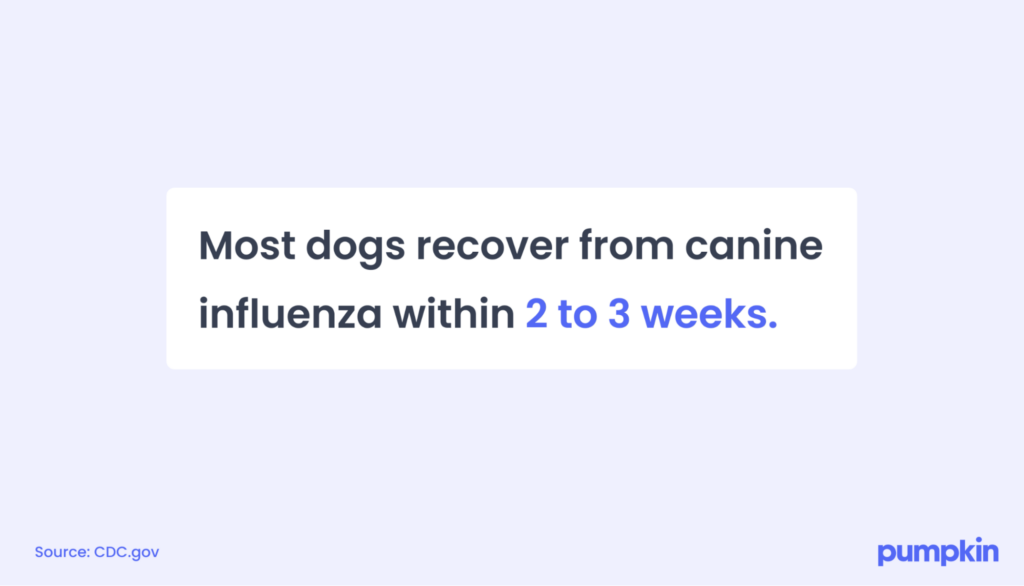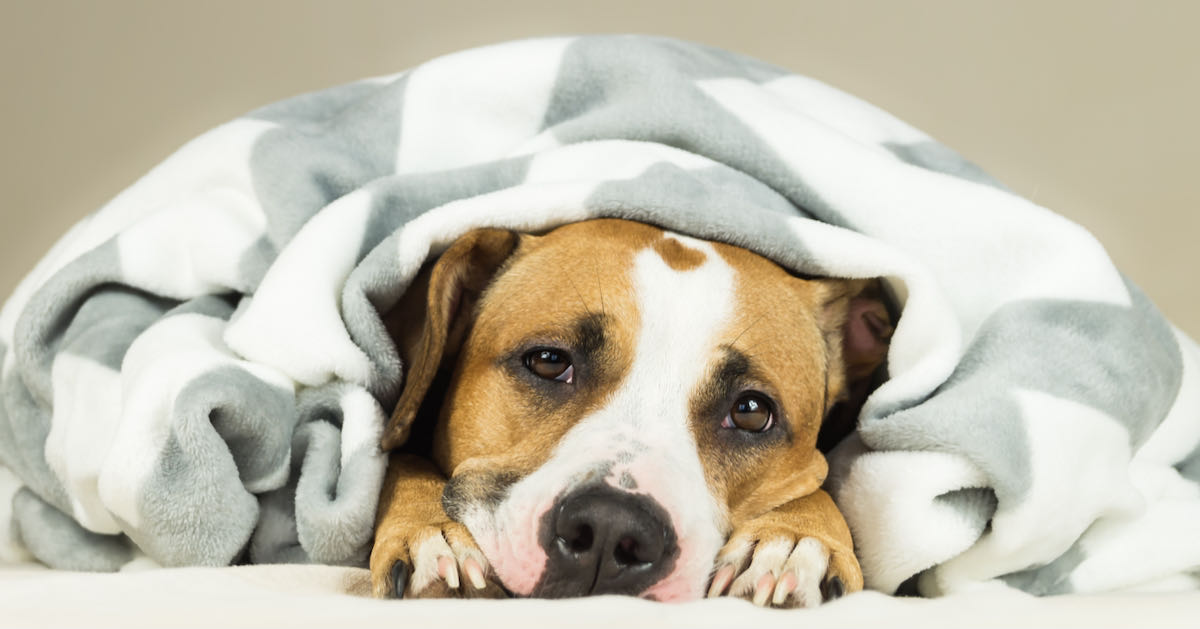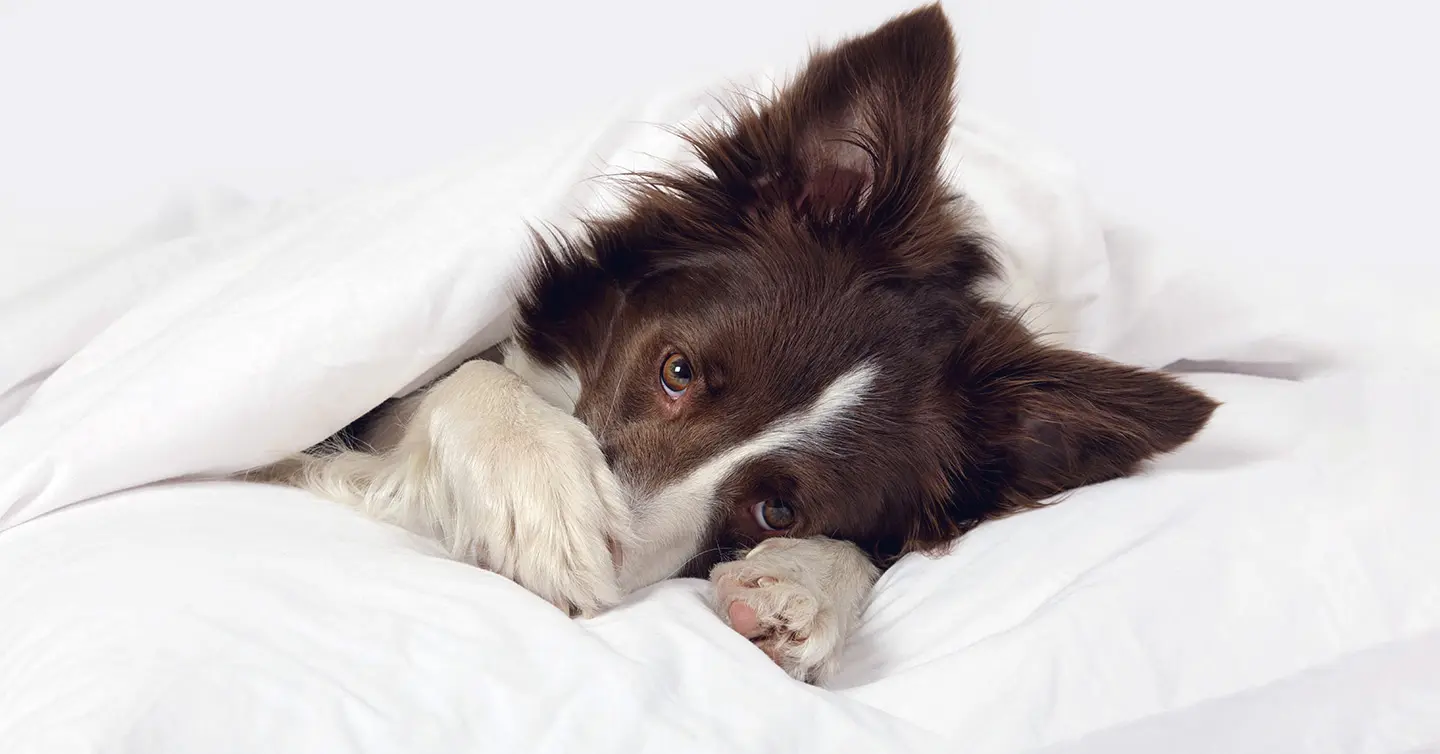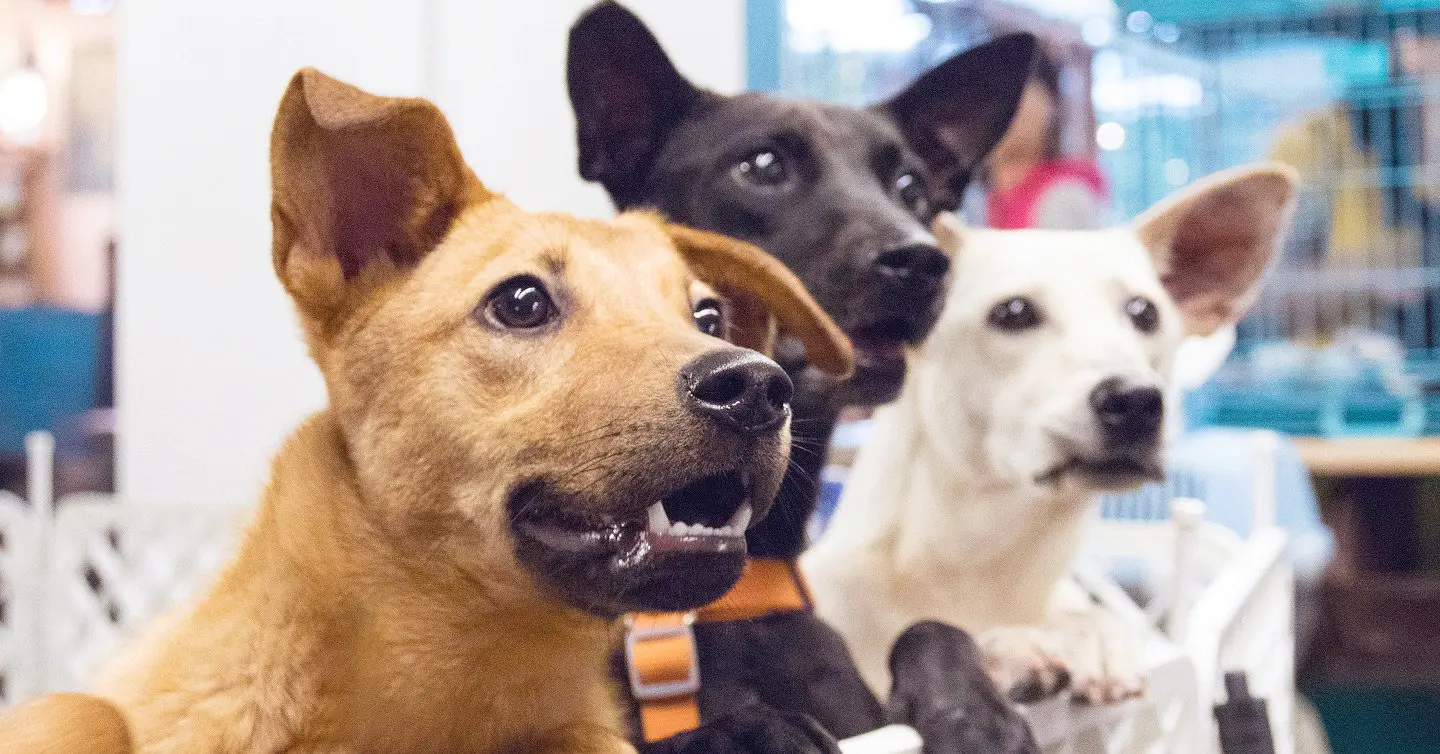Key Points
- Canine influenza is highly contagious between dogs but it isn’t transmissible to humans.
- Most dogs make a full recovery from the flu, but severe cases can lead to pneumonia.
- Your vet may recommend a canine flu vaccine if your dog spends a lot of time with other dogs in places like boarding facilities, dog training, dog shows, or dog parks.
Every winter, lots of people call in sick to work because they have “the flu.” And if you get a winter cold that saps your energy for a couple of days, you may assume you have the flu, too. However, when you really do get this virus — you’ll know it. Influenza doesn’t just make you feel crappy — it knocks you completely out of commission for a week or more with high fever, aches and pains, chills, and a sore throat.
But what about your pets? Can dogs get the flu too? And do you have to say no to puppy cuddles to stop them from getting your germs? The bad news: Dogs can and do get the flu, just like us. The good news: your pup can’t catch the same “human flu virus” as you, so you don’t have to worry about getting your dog sick (or vice versa).
Dogs can catch canine influenza from other dogs, especially if they attend doggy daycare or boarding facilities. The doggy flu virus has similar symptoms as the human variety — think coughing, fever, sneezing, and a runny nose.
In this guide, you’ll learn about dog flu, including the symptoms, treatments, and tips for prevention.
What is canine influenza?
Canine influenza, also known as dog flu, comes from two Influenza A viruses (H3N2 and H3N8) and is highly contagious between dogs. It’s a respiratory virus with symptoms such as fever, runny nose, and coughing. If your dog does come into contact with an infected pup, there’s a high probability they’ll catch it.
Most dogs who get the canine influenza virus make a full recovery. However, the severity depends on the breed, age, and overall health of your pet.
Unlike human influenza, there is no peak season for dog flu. It can happen any time of year, and your dog is most likely to catch it whenever they spend time with other pups outside of your home.
How do dogs catch the flu?
Your dog catches the flu from other sick pups, so the risk is higher in social settings. Dogs in shelters and kennels are much more likely to catch this type of influenza.
The virus is mainly spread through respiratory droplets that come from coughing or sneezing (dogs catch colds and kennel cough in the same way). Keep in mind, the canine influenza virus can also live on contaminated surfaces such as food and water bowls, leashes, and bedding.
Dog flu has a long life span and can survive:
- Up to 48 hours on hard surfaces in climate-controlled environments (less time in the sun)
- Up to 24 hours on soft surfaces
- Up to 12 hours on your hands and skin
Your dog doesn’t need to show symptoms to be contagious. They can still shed the virus before you even know they are sick — and this is why it spreads so easily.

Occasionally cats can catch this virus, so be mindful if you have a multi-pet household.
Can dogs get the flu from humans?
Can dogs catch the flu from you? No, your canine companion can’t catch the flu directly from humans.
However, it’s still possible to spread canine influenza to your pet. If you have been in contact with infected dogs and have the virus on your body or clothes, it can be passed on to another dog or cat.
There are no cases of humans catching canine influenza from dogs, either. While we can catch the seasonal flu from other people with similar symptoms, it is a different virus.
While viruses can mutate and adapt, there is a very low likelihood of dog-to-human transmission of influenza in the future. Still, the U.S. Centers for Disease Control and Prevention (CDC) monitors reported cases of the seasonal (human) flu to flag anything unusual.
Canine influenza symptoms
What are the most common symptoms of dog flu? Some pups may have mild or no symptoms, while others may experience:
- A wet or dry cough
- Thick nasal discharge
- Fever over 103° Fahrenheit
- Lethargy
- Loss of appetite
- Runny eyes
- Difficulty breathing
These can also be signs of other illnesses like kennel cough, an infectious respiratory disease. Your vet will be able to diagnose your pet and give them the right treatment plan.
Sometimes dog flu can be dangerous. If symptoms get worse, your pup may end up with a lung infection such as bacterial pneumonia. This is a higher risk if they are in their senior years or have a compromised immune system.
Most dogs recover from the flu virus within a week or two. The fatality risk is low, at around 1-5% of dogs who get infected.
How to treat canine influenza
The treatment for canine influenza will depend on the severity of the illness and your dog’s overall health.
If your pet has mild cold symptoms, your vet may recommend at-home care to keep them comfortable. Make sure they have a quiet place to rest and encourage them to drink plenty of water. You don’t want them to get dehydrated, especially if there is a slight fever.
Your dog may also have a reduced appetite, so try offering them small servings of bland food. If your pup refuses to eat for more than 24 hours, you should seek veterinary attention.
There are no antiviral treatments, but your vet may prescribe supportive medications or fluids. For the best outcome, you should carefully follow their instructions.
Never give human cold medication to your pets, as some common OTC cold medicines are toxic to dogs.

Remember, canine flu can turn into pneumonia, so in severe cases, your dog may need a stay at an animal hospital.
How can you prevent canine influenza?
Here are a few strategies you can use to reduce the risk of canine influenza:
Be engaged: Try to be aware of what’s happening in your community so that you know if there is an outbreak in your area. This information may be found online by following your vet, joining local groups, and checking the news.
Consider vaccination: There is a canine influenza vaccine, but it is not included in a typical puppy vaccination schedule. If your pet is at risk of exposure, it may be recommended — think regular visits to pup-friendly places such as dog parks, kennels, and daycare settings. After the initial doses, the dog flu vaccine is an annual booster shot.
Protect your pets: Canine influenza comes from other dogs, so minimizing contact with sick pups can help to stop the spread. If you have an infected dog, try to isolate them from other dogs and cats. Don’t let your pets share toys, water bowls, or food bowls when they’re sick.
Prioritize hygiene: Finally, good hygiene can reduce the spread. Whether it’s washing your hands regularly, keeping your floors clean, or sanitizing your pet’s bedding, every little bit helps.
Caring for a dog with the flu
Your pet can’t catch the flu from you, and you can’t catch it from them. However, canine influenza is highly contagious between dogs. If you suspect your dog has the flu, give your vet a call. They will tell you how to care for your pup and whether you should bring them in for a checkup.
To be prepared for the unexpected, a pet insurance plan can give you peace of mind. Pumpkin Pet Insurance plans can help cover eligible vet bills for future accidents or illnesses, so your pup can get the best care without the financial sting.




